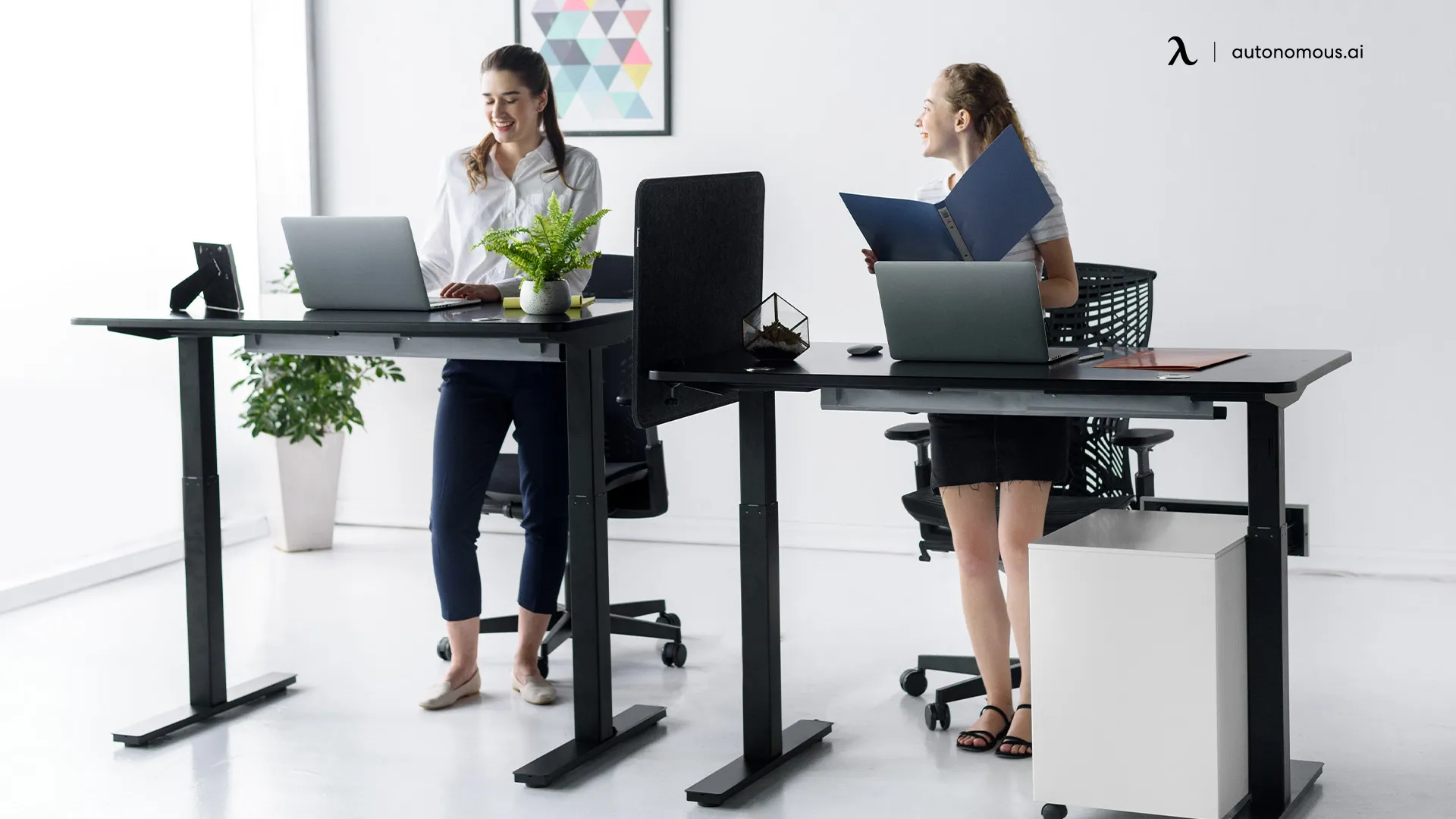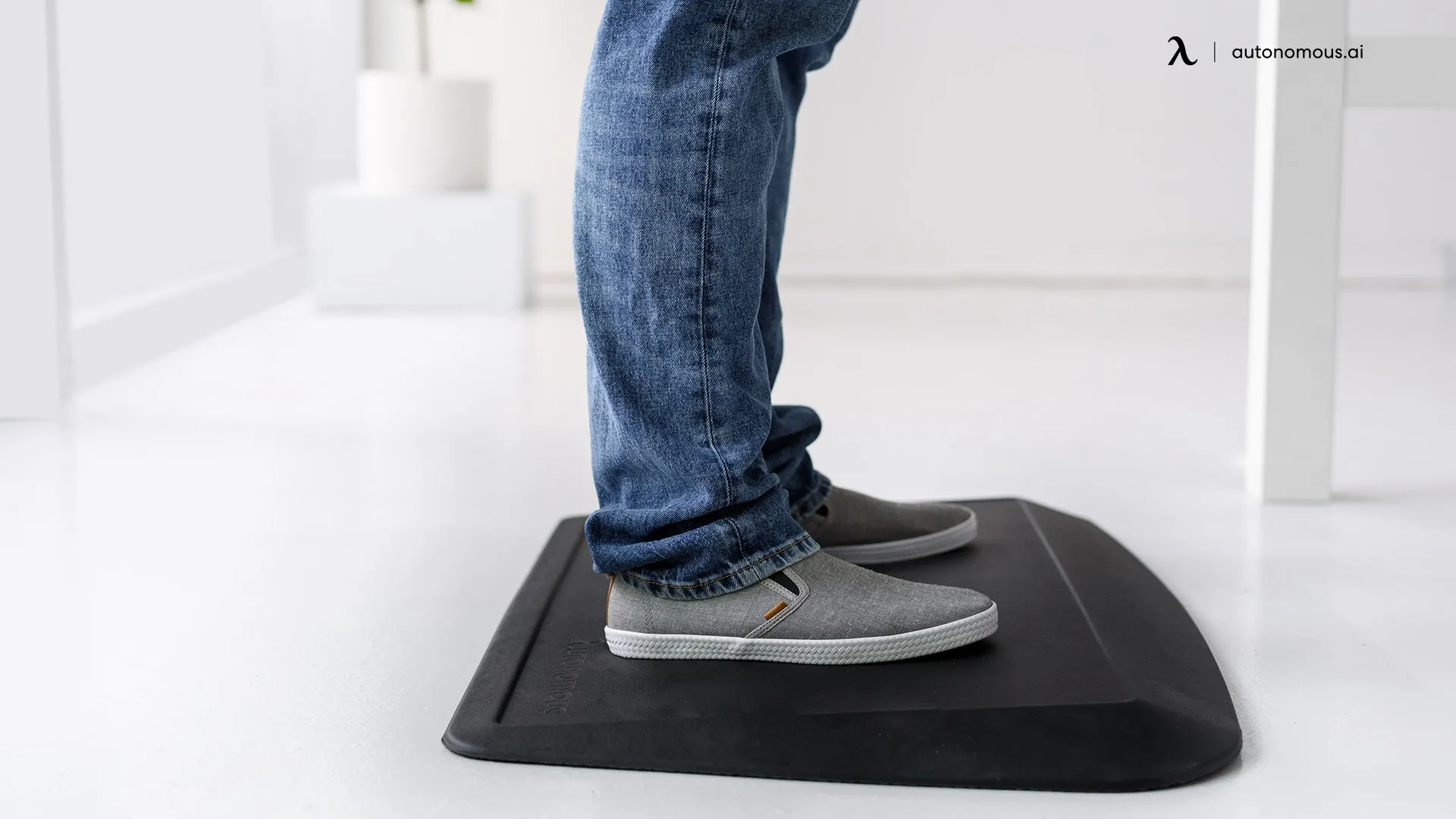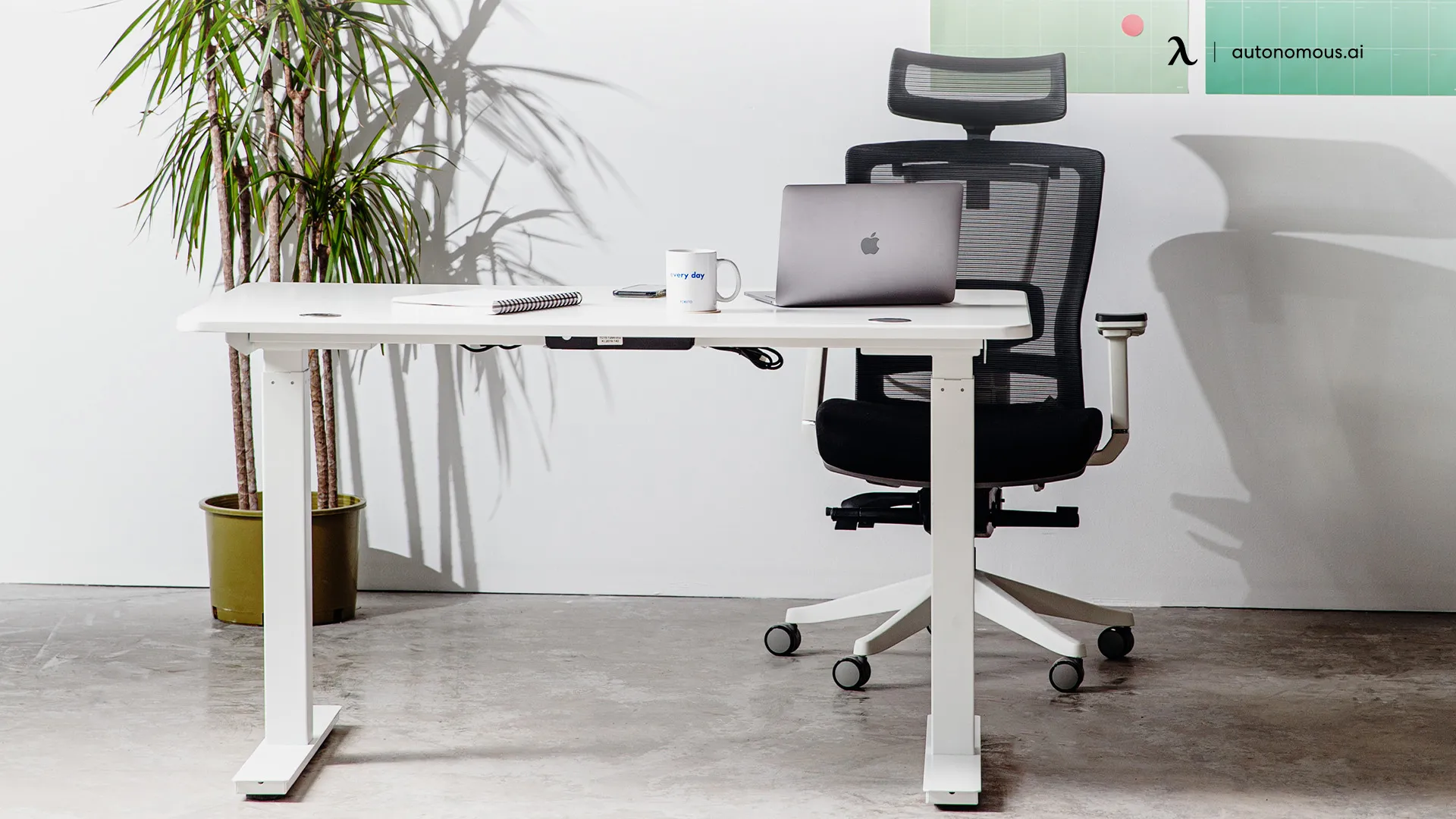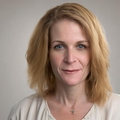
Table of Contents
The benefits of a standing desk have been well known in office spaces for a long time. They represent a major ergonomic shift in the modern workplace, where people are encouraged to alternate their workday between sitting and standing. But what is the best way to use a standing desk, and how long should you stand to avoid fatigue or sore feet by the end of the day?
This question often concerns many and may cause hesitation about transitioning to this new way of working. However, alongside standing desk accessories that enhance comfort, several findings can help you plan your workday effectively.
How Many Hours Should You Stand a Day?
Defined as the new smoking, prolonged sitting has been linked to numerous health issues. A standing desk is a versatile solution that allows you to enjoy the benefits of standing while working. With a height-adjustable standing desk, you can alternate between sitting and standing. Here’s a guideline on how long to stand at a desk to reap the maximum benefits:
Optimal Standing Duration: The time you should spend standing varies based on individual factors and your adaptation to using a standing desk. Generally, experts recommend standing for about 5-15 minutes every hour. Research also suggests standing for a total of 2 hours during an 8-hour workday, gradually increasing to 4 hours. This includes other activities such as walking to the coffee machine or stretching, all of which count towards your standing time.

Benefits of Standing
When used properly, standing desks can bring a range of health and productivity benefits. Some of the key advantages include:
- Reduced Risk of Obesity: Standing burns more calories compared to sitting, which can help in weight management.
- Lower Blood Sugar Levels: Standing after meals can reduce blood sugar levels, which is particularly beneficial for people with insulin resistance or diabetes.
- Reduced Risk of Heart Disease: Studies suggest that standing more can reduce the risk of heart disease.
- Reduced Back Pain: Standing can alleviate lower back pain associated with prolonged sitting.
- Improved Mood and Energy Levels: Standing has been linked to improved mood and energy levels, reducing feelings of fatigue and depression.
- Increased Productivity: Many users report enhanced productivity and alertness when using a standing desk.
How Often Should You Stand Up from Your Desk?
To achieve a balance, alternate between sitting and standing every 30 minutes. This routine helps keep you active and prevents fatigue. Set reminders to prompt you to switch positions regularly, or associate standing with certain activities like phone calls or meetings.
Risks of Sitting Too Long
Prolonged sitting has been linked to several health problems, including:
- Muscle Weakness: Large muscles in the legs can weaken and become prone to pulls and strains.
- Hip Issues: Flexor muscles in the hips can shorten, leading to hip problems.
- Varicose Veins: Sitting can cause blood to pool in the legs, leading to varicose veins.
- Back Problems: Poor posture and prolonged sitting can exacerbate lower back issues, causing discomfort and potential damage to the spine.
- Increased Health Risks: Prolonged sitting is associated with a higher risk of heart disease, diabetes, obesity, and even cancer.
Avoid Standing for Too Long
When used in moderation, standing desks can offer numerous health and productivity benefits, as highlighted in the standing desk pros and cons, from improved posture and circulation to increased energy and focus. However, just as prolonged sitting has its risks, standing for too long can also be detrimental. Standing for extended periods, especially if you’re new to a standing desk, can lead to issues such as lower back pain, thigh pain, and sore feet.
For those with pre-existing back problems, it's advisable to stand for no more than 10 minutes at a time initially. Health risks of prolonged standing:
- Heart Problems: Standing too long can strain the heart.
- Neck Pain: Extended standing can cause neck tension and headaches.
- Back Pain: Puts pressure on the lower back muscles.
- Hernia: Excessive standing can increase the risk of hernias.
- Diabetes: Prolonged standing can elevate blood sugar levels.
- Poor Circulation: Standing too long can lead to varicose veins.
- Joint Problems: Increased stress on joints can cause pain over time.

How Should You Stand at You Desk?
Use Standing Desk Support
Standing directly on hard floors can exert a lot of pressure on your feet, calves, and legs. To mitigate this, use supportive accessories like a standing desk mat or balance board. These tools provide cushioning and promote subtle movements, improving comfort and reducing fatigue.

Find the Ergonomic Height
Adjusting your standing desk to the correct height is crucial for maintaining good posture and reducing strain. The ideal desk height is such that your arms are at a 90-degree angle when typing, and your screen is at eye level to avoid neck strain.
Start with a Simple Schedule
Ease into using your standing desk by gradually increasing your standing time. Start by standing for shorter periods and gradually increase the duration. For instance, you can stand during phone calls or meetings and after lunch to aid digestion.
Get an Ergonomic Chair
Since you’ll still be sitting for part of the day, pair your standing desk with an ergonomic chair. This ensures you maintain good posture and comfort even when seated. An ergonomic stool is also a great option for a more compact setup.

Practical Tips for Alternating Between Sitting and Standing
- Listen to Your Body: Pay attention to any signs of discomfort or fatigue. Adjust your standing and sitting intervals based on how your body feels.
- Use Technology: Set timers or use apps designed to remind you to change positions throughout the day.
- Incorporate Movement: Take short walks, do light stretching, or perform simple desk exercises to keep your muscles active and reduce stiffness.
- Customize Your Setup: Ensure your desk and chair are adjusted to suit your height and ergonomic needs.
Summary
Finding the right balance between sitting and standing is key to maximizing the benefits of a standing desk. Start slowly, use ergonomic accessories, and listen to your body. By integrating these practices, you can enhance your workday comfort and productivity.
Spread the word
.svg)







